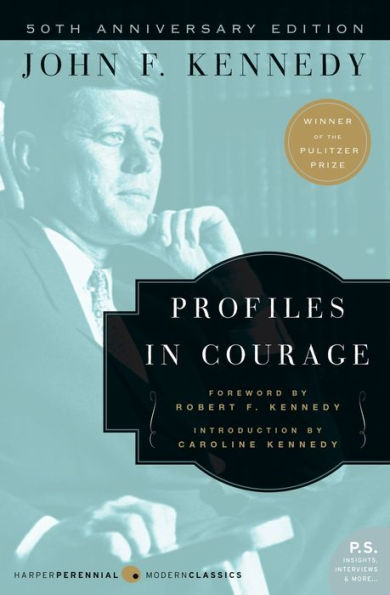When John Kennedy ran for president, I was excited. He was young, charming, and witty. And as an eight-year-old Catholic, I thought it was cool that he might become the first Catholic president. My enchantment with JFK continued into my early teen years when I read his book Profiles in Courage.
Given our day of politicians being hyper-pressurized to conform to their party (Republican or Democratic), I decided to revisit this book about eight U. S. senators from over a span of two centuries. I remembered little of it but wondered what the stories might teach about a willingness to sacrifice one’s political career for principle and the common good. And I found some of what I expected.
When Senator John Quincy Adams supported the contested trade policy of the other party’s president (that is, of Jefferson who had defeated Adams’ own father!), “Simply because he had placed national interest before party and section, the Federalists had deserted him. Yes, he thought, I did not desert them, as they charge— it is they who have deserted me” (p. 30).
But then I also found sentences I tripped over. Kennedy wrote that radical, abolitionist Republicans made Reconstruction “a black nightmare the South never could forget.” (p. 139) Well, yes, the dozen years after the Civil War were a nightmare for most whites when northern troops enforced the Fifteenth Amendment so blacks could vote as full citizens. But was Kennedy really accepting a racist white viewpoint that this period was a disaster?
Apparently so. I was then bewildered to read, “No state suffered more from carpetbag rule than Mississippi.” Kennedy said that corruption was rampant and that taxes rose by a factor of fourteen under the state government elected in Reconstruction. “Vast areas of northern Mississippi lay in ruins” (p. 147).
Yet as historian Nicholas Lemann writes, “None of this is true.”
Only in recent decades has the fuller, more accurate story become better known of the systematic campaign to deny blacks the vote in the South after Reconstruction from 1877 to the mid-twentieth century. (See, for example, of Ken Wytsma’s The Myth of Equality, pp. 55-57.) Layer upon layer of requirements were (unequally) enforced to limit who could vote, limits “not based on race” which nonetheless somehow(!) dramatically reduced black but not white voting.
Kennedy also writes positively about even the staunchest and best-known pro-slavery Senator in U.S. history—John C. Calhoun—who, Kennedy tells us, nearly made the cut in his book as one of the Senate’s most courageous.
Given that Civil Rights is one of the chief pillars of Kennedy’s presidential legacy, what is going on? Several answers are possible.
One is that Kennedy was simply a man of his time, influenced by the northern and southern white desire to not rock the boat by dredging up all the unpleasantness of the past. Another (less courageous and more cynical) answer is that this book, published in 1956, was intended to broaden southern support for the presidential candidacy of a senator from Massachusetts in 1960.
Kennedy was a complex person, and we should not judge him one dimensionally. We should also be generous enough to recognize that people can grow and change. Profiles in Courage likewise needs to be read more than one dimensionally.
One thing we can take away is this: we still need those most rare of political leaders—those courageous enough to stand against their party and even their own constituents in order to stand for the value of every human, the common good, and doing what is moral.

